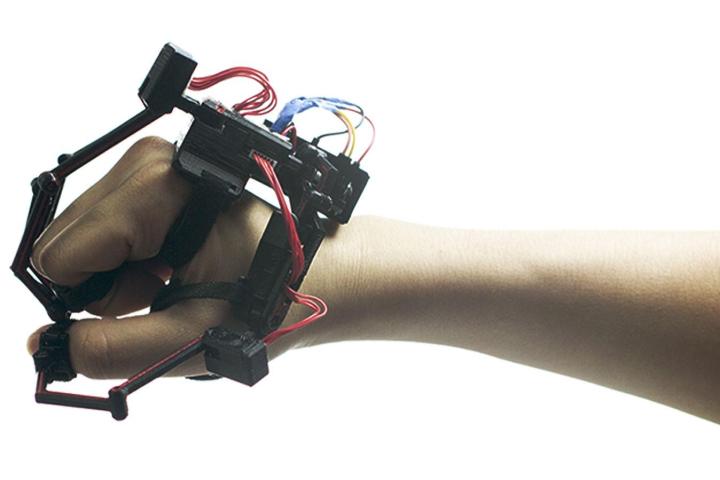
We’ve seen this before in various forms. In the early days it was simple vibrating controllers, and later on in wearable devices like Kor-FX, but Dexmo –a device that’s recently popped up on Kickstarter— aims to take things a step further. Instead of providing simple haptic feedback and vibrations, this exoskeleton glove is designed to provide your fingers with resistance; thereby enabling you to ‘feel’ the presence of virtual objects with your hands.
Related: PrioVR mocap suit turns your entire body into a gaming controller
This is made possible with the help of a cleverly-engineered braking system. When inactive, the brakes don’t impede the wearer’s finger movement at all, and allow for full freedom of motion. When switched on, however, individual braking mechanisms will prevent the user’s fingers from moving up or down when they come into contact with a ‘solid’ virtual object. If the wearer were to grab a virtual ball, for example, the brakes would stop the person’s fingers at a certain point, making it feel as if there’s a spherical object in their hand. Pretty nifty, right?
Well it gets better. Force feedback isn’t the only trick Dexmo has up its sleeve. With the right programming, the device can be used as an input device for just about anything — a robotic hand, the arm of a virtual character, an RC car, or even the lamp on your desk. In one of the demo videos on Dexmo’s Kickstarter page, the creators show how it can be programmed to recognize sign language and provide a nearly instantaneous translation.
The device only exists in prototype form at this point, but Dexta Robotics has recently taken to Kickstarter to raise funds for large-scale production. If the team can meet its $200K funding goal, Dexmo could ship to backers as early as May of 2015 — and it’s already off to a good start. Find out more here.



